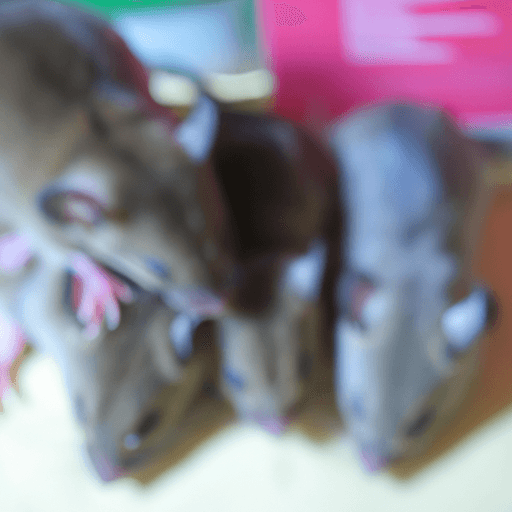| Complexity level: | 6 |
| Project cost ($): | 30 |
| Time required: | 2 day to prepare, 10 days for the science project experiment |
| Material availability: | Mice may be purchased from a pet store |
| Safety concerns: | Handle the mice with care |
Hypothesis
A mouse will be able to find its way through maze more quickly by using its sense of sight rather than its sense of smell.
Overview
Mice
Mice are mammals. They typically measure about 15 to 20 cm in length on average, from the nose to the tip of the tail, and weigh about 35grams. Mice have thin fur, long tails and come in several shades of black, white or brown. They are also popular as pets as it is easy and fairly inexpensive to care for them.
Mice used to live in farms where they were a nuisance, damaging and eating the crops. Urbanization brought them to ourcities where they now live in the sewers, crevises and drains. Mice are regarded as pests because their urine, feces and bodies contain germs, fleas and parasites that are harmful and sometimes fatal to people (take the bubonic plague, for example, that raged across Europe in the medieval ages, claiming over 100 million lives!). They also damage food, food packaging, and our homes (they chew through wires, furniture and clothing). Although mice are actually herbivores, they have adapted to urban living, by eating all types of food scraps.
Scientific Terms
Materials
The materials required for this science fair project:
- 10 mice
- 1 packet of sunflower seeds
- Cardboard or old carton boxes (quantity as may be required to make the maze)
- Cardboard 500mm x 800mm to cover the maze
- 1 pair of scissors
- 1 roll of masking tape
- 1 bottle of glue
- 1 stopwatch
- 1 meter-length ruler
Procedure
1. For this science fair project, the independent variable was whether the maze is lit, or in darkness. The dependent variable was the time taken by the mouse to complete the maze. This was determined by using a stopwatch. The constants (control variables) were the size and type of the maze, how hungry the mice were, and the type of food used.
2. A maze approximately 500mm x 800mm in size was made using cardboard, glue and masking tape. The walls of the maze were at least 200mm high, to prevent the rodents from jumping out. See figure 1.

3. Once the maze was completed, we left it outdoors for 2 days in order for the smell of the glue dissipate. This was to avoid the mice from being distracted by the smell of glue.
4. A sunflower seed was placed at the end of the maze. The mice were dropped at the start of the maze one at a time. The time taken for each mouse to find the food was recorded.
5. Procedure 4 was repeated once a day for 9 days and it was observed that the mice were fairly consistent in terms of how quickly they were able to solve the maze. The speed of the mice on the 9th day was recorded.
6. On the 10th day, a piece of cardboard was used to cover the top of the maze. This meant that the mice were running through the maze in darkness. The mice were again placed in the maze one at a time and the amount of time they took to find the food was measured and recorded.


Results
It was observed that covering the maze with a cardboard did not affect how quickly the mice were able to locate the food.
|
Time taken by the mouse to complete the maze (seconds) |
||||||||||
|
1 |
2 |
3 |
4 |
5 |
6 |
7 |
8 |
9 |
10 |
|
|
9th day (uncovered) |
41 |
38 |
43 |
35 |
37 |
40 |
38 |
36 |
41 |
42 |
|
covered |
41 |
38 |
44 |
34 |
36 |
40 |
39 |
37 |
40 |
41 |
The chart below shows the results of our science experiment.

Conclusion
The hypothesis that mice will be able to find their way through a maze more quickly by using their vision, instead of their sense of smell, is proven to be incorrect. The mice were able to navigate through the maze at the same speed, even in darkness.
Mice have poor vision because they are nocturnal animals and usually look for food at night, and sleep in the day. This is the reason why we normally find our kitchens raided by mice at night. They have a keen sense of smell and hearing to search for food and escape from predators, even in the dark.
Also consider
What would happen if this science fair projects were repeated by using hamsters instead of mice?
Try varying your science experiment, by using different types of food like corn, cheese or nuts.
References
House mouse - http://en.wikipedia.org/wiki/House_mouse
Mouse - http://en.wikipedia.org/wiki/Mouse

